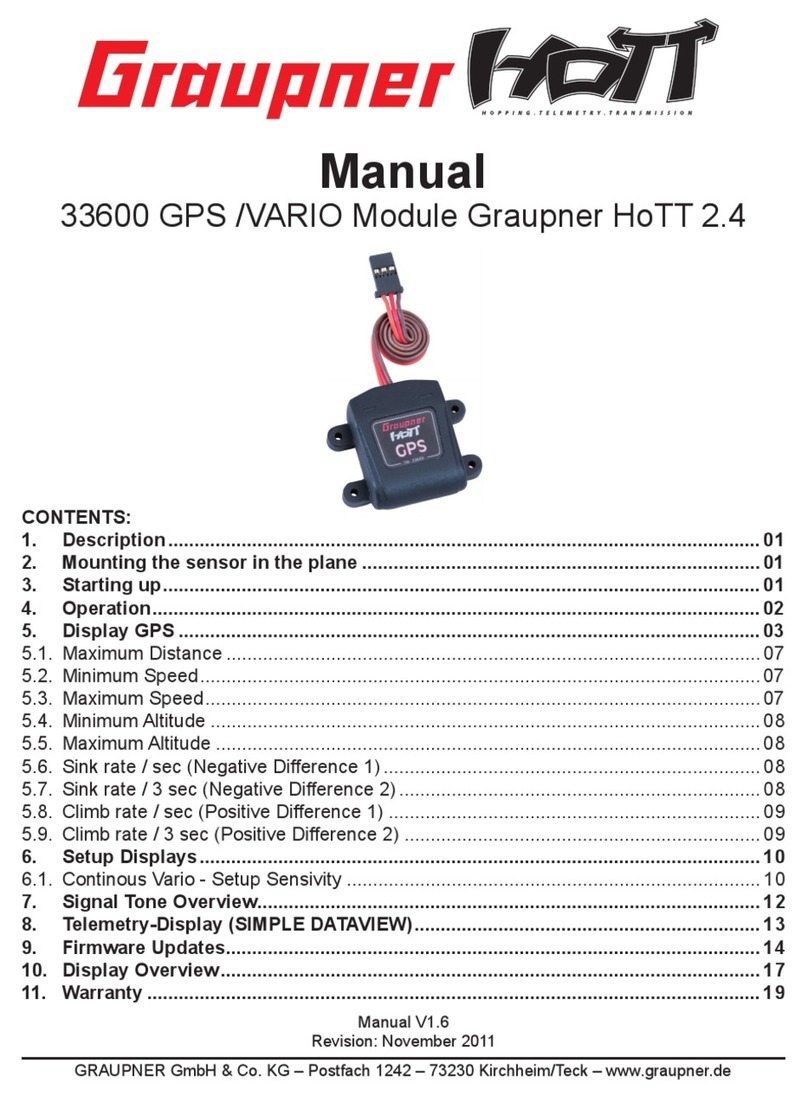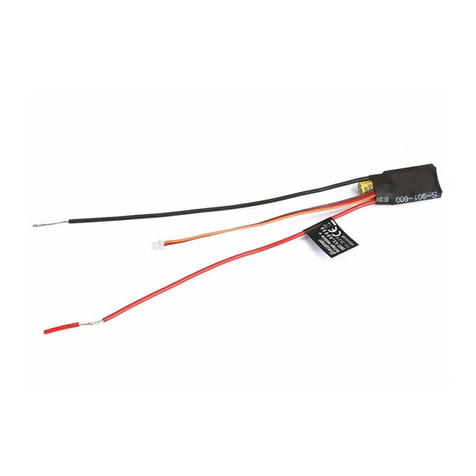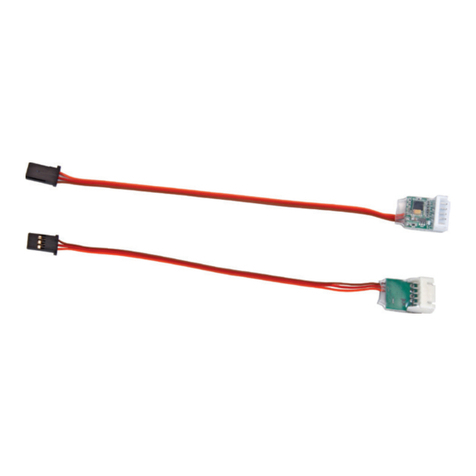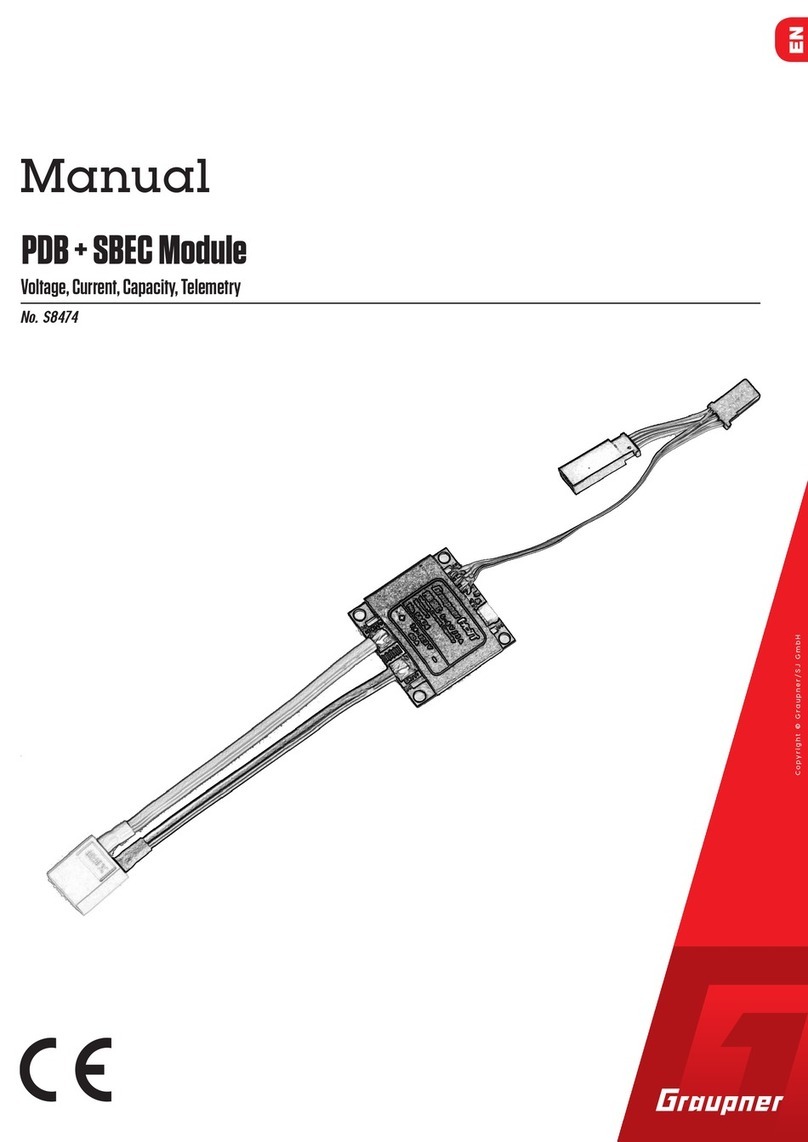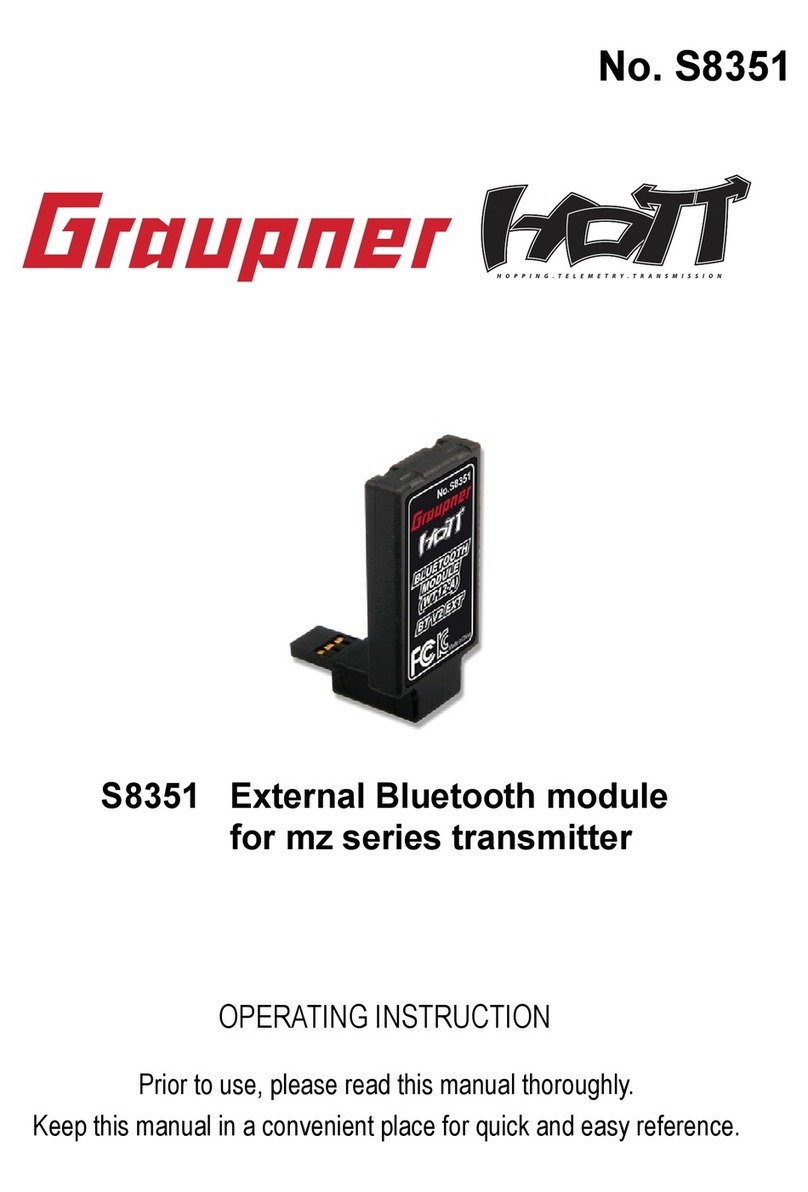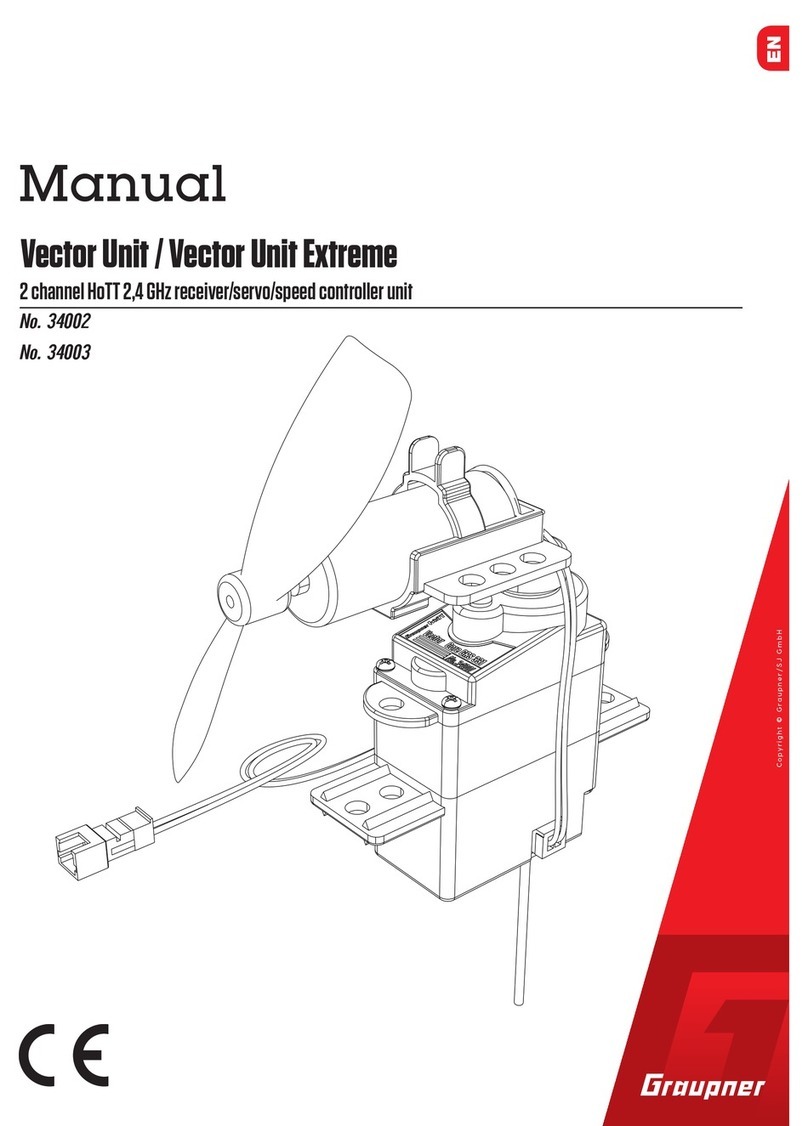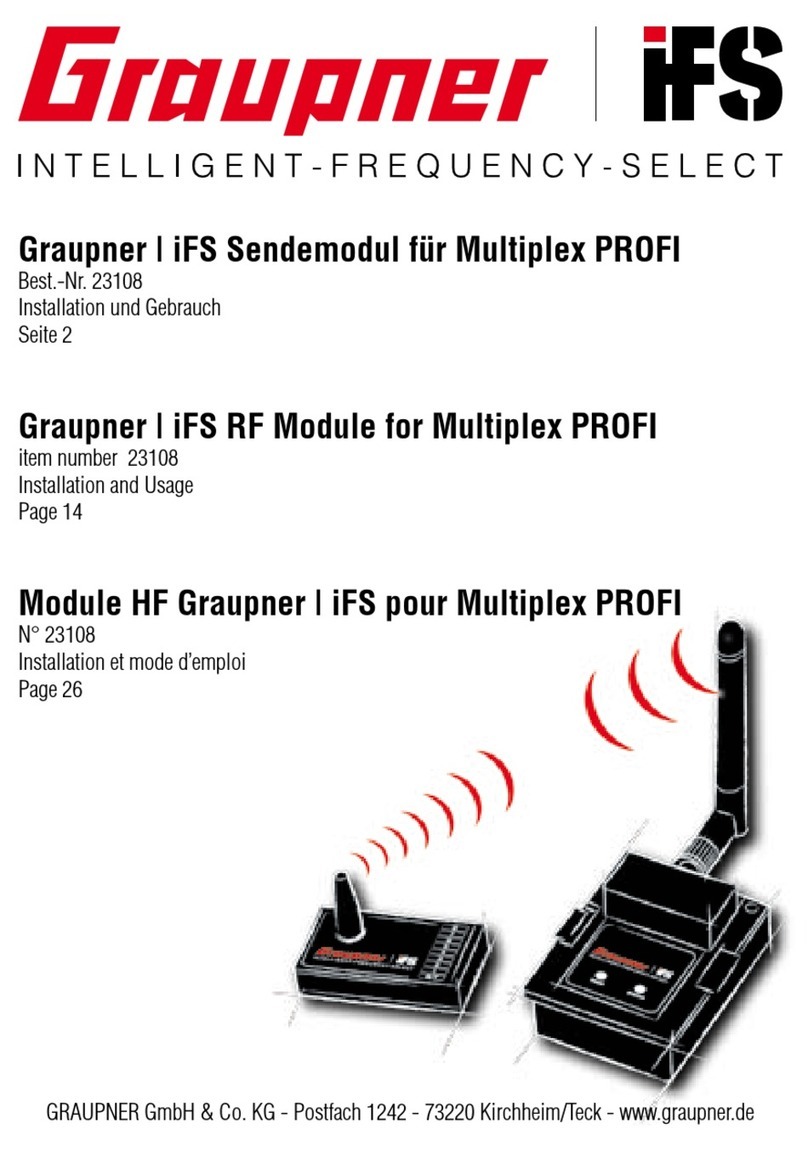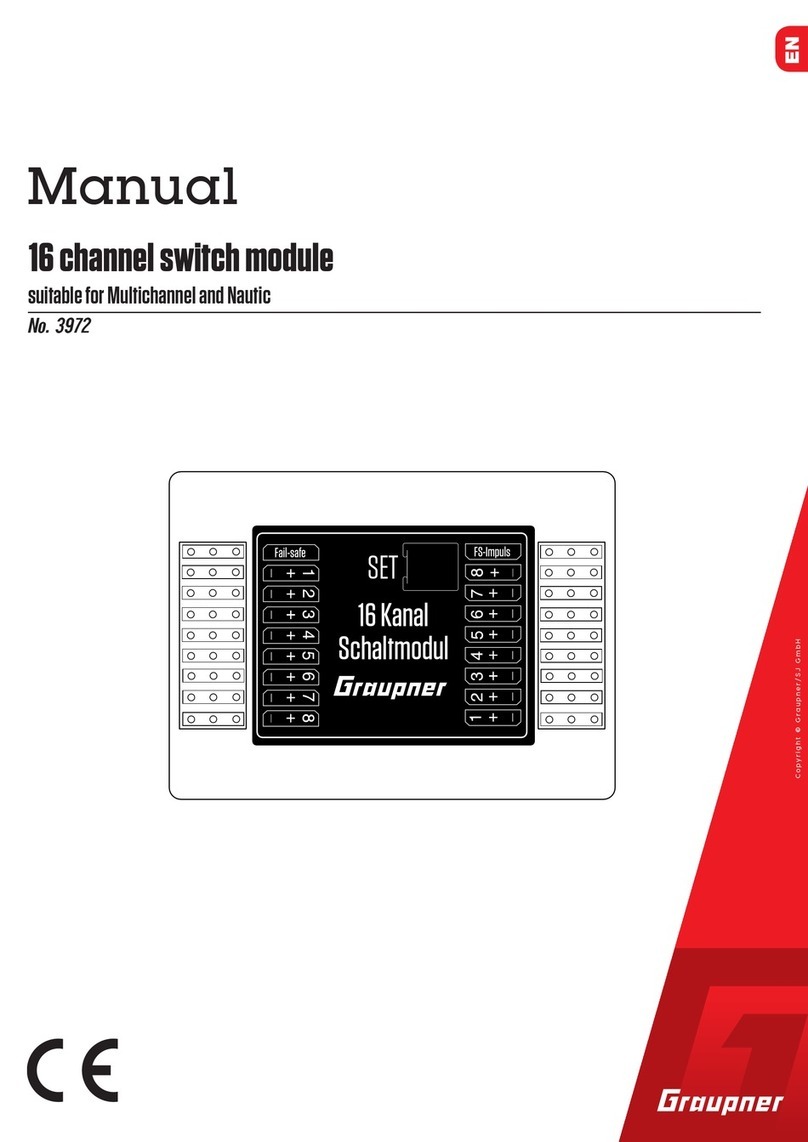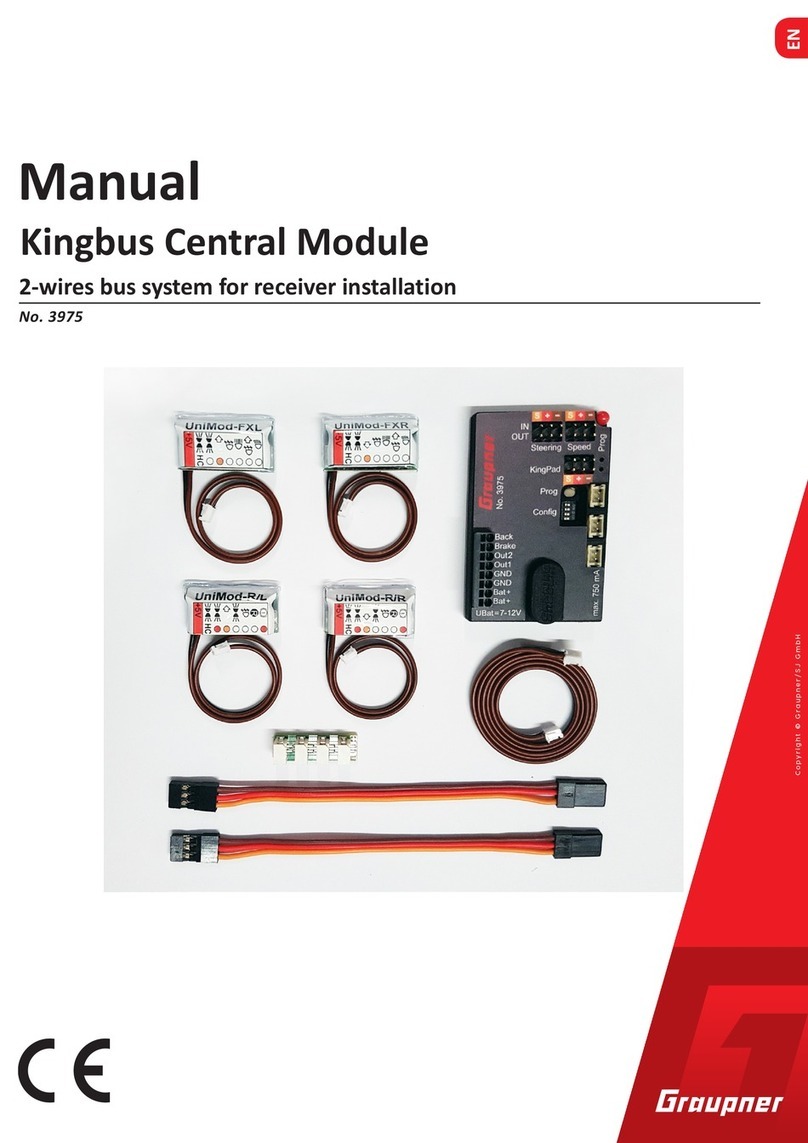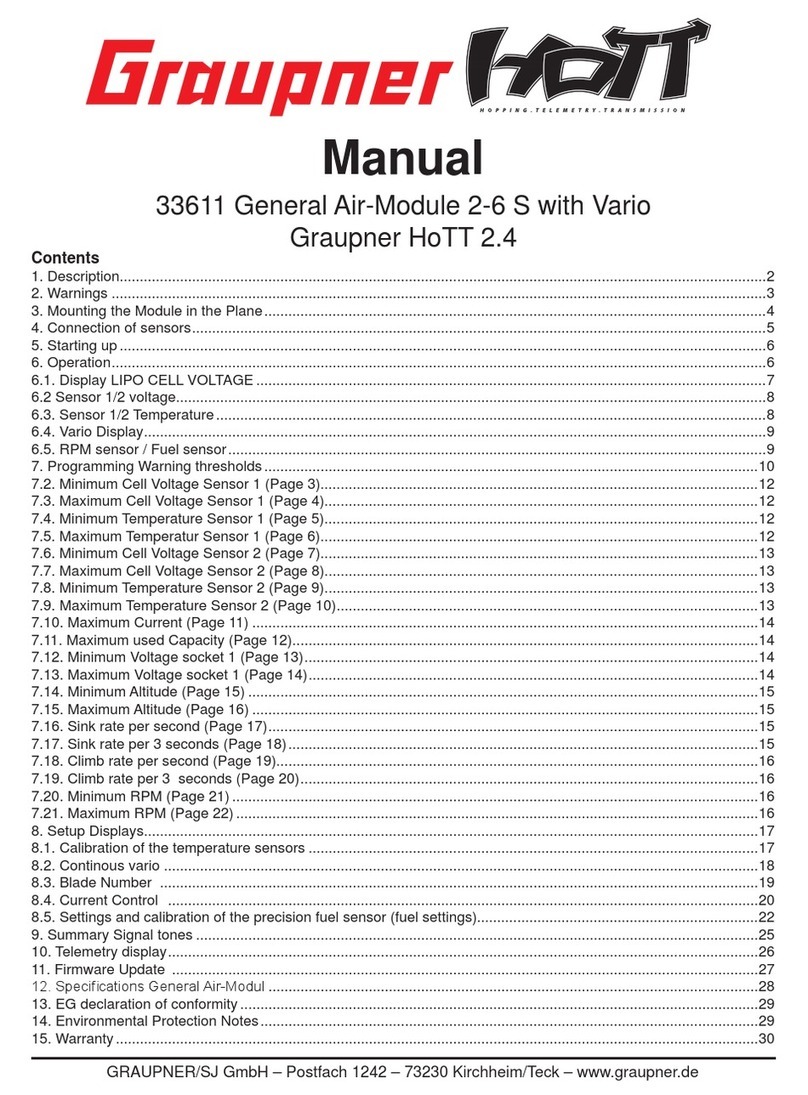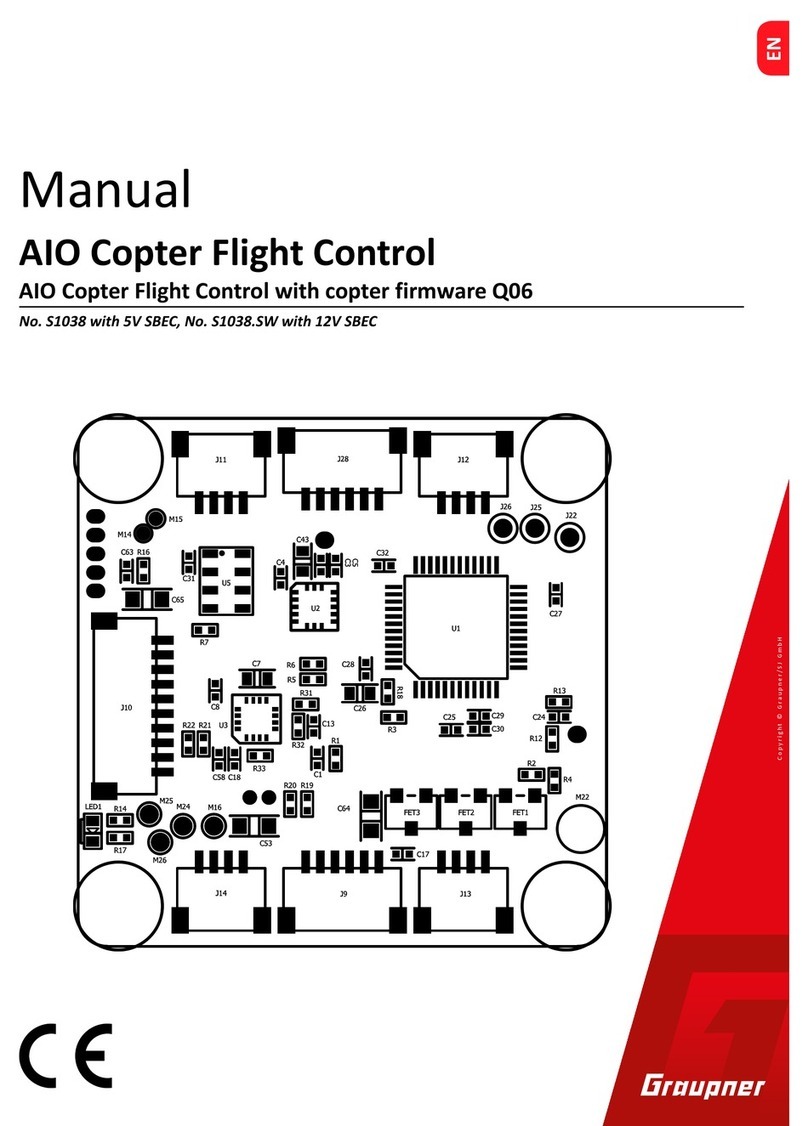
These operating instructions are part of this product. They contains important notes to the operation and
handling. Please take this into consideration when you pass on the product to third parties. Neglect of
the operating instructions and the safety instructions lead to expiring the warranty.
Graupner constantly work on the advancement of all remote control systems; changes of the scope of
delivery in form, technology and equipment we must reserve ourselves therefore. Please have under-
standing for the fact that from data and illustrations of this operating instructions no requirements can
be derived.
Please keep these instructions for further reference!
1. INTRODUCTION
Many thanks for purchasing the Graupner M-G2 HoTT 2.4 module. This module is a direct replacement
for the standard RF module fitted to your mx-22, mx-24, and mc-18, mc-20, mc-24 transmitters.
Please read right through these instructions before you attempt to install and use the system.
Installation requirements
We recommend that you have the module installed by a Graupner Service Centre. It is possible for
the modeller to carry out the conversion himself provided that he has a certain amount of manual skill,
but the transmitter’s firmware needs to be updated for the first time in order to integrate the telemetry
display - also the Telemetry PCB Order-No. 33306 is necessary - (mx-24 and mc-24 only), and this can
only be carried out by the Graupner Service Centre Germany. Please note that we cannot offer a gua-
rantee for all failures which have been caused by incorrect installation, if you carry out the conversion
work yourself.
2. PREPARING THE SYSTEM
mc-series
First remove your previous RF module. For details of this procedure please refer to the appropriate
chapter in the operating instructions supplied with your radio control system. If you have previously
used a 35 MHz system, you will also need to replace the telescopic aerial with the Graupner HoTT aerial
supplied in the set.This requires the use of the aerial conversion kit for tray-mounted transmitters, Order
No. 23049, and the aerial, Order No. 33801 - see Figs. 5 to 10.
If you have previously used a 2.4 GHz system such as Graupner iFS, all you need to do is unplug the
existing aerial from the module.
Manual Module M-G2
Order-No. 33302
01 Manual Module M-G2 33302
mx-series
First remove your previous RF module. For details of this
procedure please refer to the appropriate chapter in the ope-
rating instructions supplied with your radio control system.
If you have previously used a 35 MHz system, you will also
need to replace the telescopic aerial with the Graupner HoTT
aerial supplied in the set.
This is the procedure: first unscrew the telescopic aerial from
the transmitter, then pass the aerial wire attached to the
HoTT aerial through the opening, working from the top. The
mounting adapter (1) features a small notch on one side (see
detail), through which the aerial wire is routed; this must be
on the left-hand side, as seen from the front. Fit the adapter
in the opening, followed by the tubular spacer (2), with the
hole for the retaining screw facing the rear. Now secure the
adapter by tightening the gold-coloured M4 screw (4) fully.
The final step is to fit the aerial on top and secure it with the
black self-tapping screw.
If you have previously used a 2.4 GHz sys-
tem such as Graupner iFS, all you need to
do is unplug the existing aerial from the mo-
dule.
1
2
3
5
4
6
1 6

